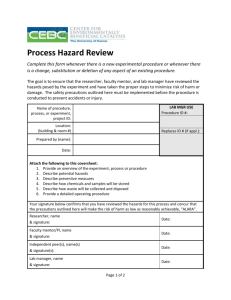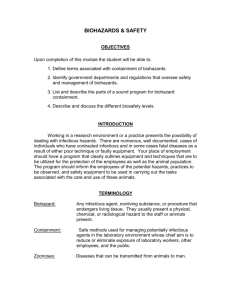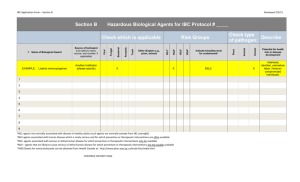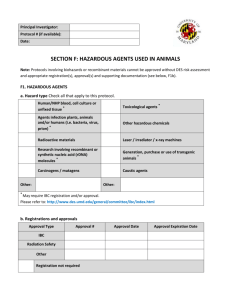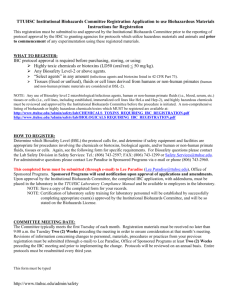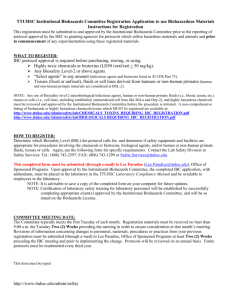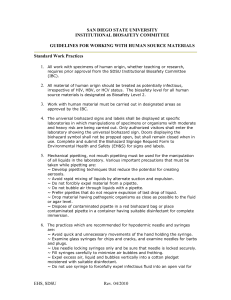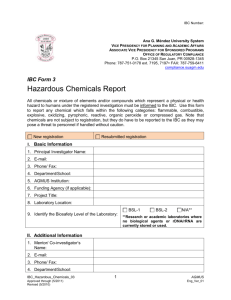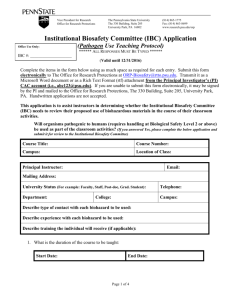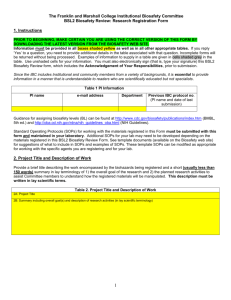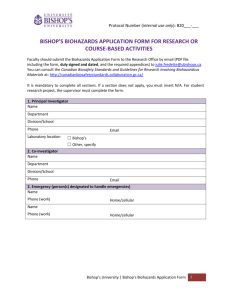Word.doc
advertisement
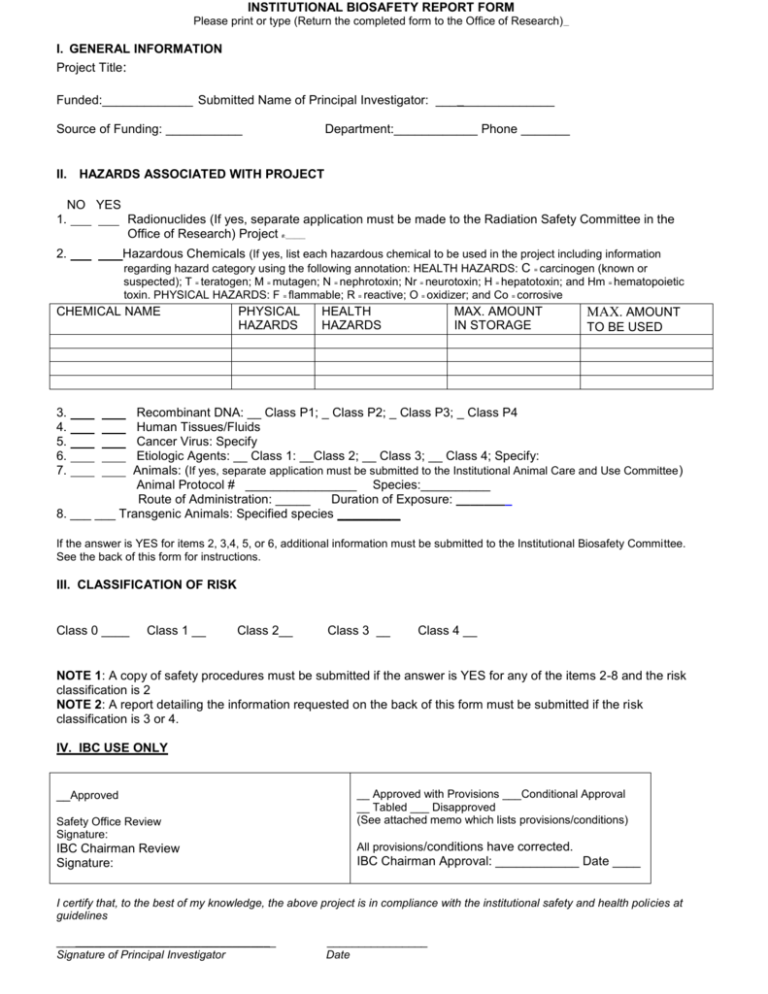
INSTITUTIONAL BIOSAFETY REPORT FORM Please print or type (Return the completed form to the Office of Research) __ I. GENERAL INFORMATION Project Title: Funded:_____________ Submitted Name of Principal Investigator: _________________ Source of Funding: ___________ Department:____________ Phone _______ II. HAZARDS ASSOCIATED WITH PROJECT NO YES 1. Radionuclides (If yes, separate application must be made to the Radiation Safety Committee in the Office of Research) Project #:_______ 2. Hazardous Chemicals (If yes, list each hazardous chemical to be used in the project including information regarding hazard category using the following annotation: HEALTH HAZARDS: C = carcinogen (known or suspected); T = teratogen; M = mutagen; N = nephrotoxin; Nr = neurotoxin; H = hepatotoxin; and Hm = hematopoietic toxin. PHYSICAL HAZARDS: F = flammable; R = reactive; O = oxidizer; and Co = corrosive CHEMICAL NAME PHYSICAL HAZARDS HEALTH HAZARDS MAX. AMOUNT IN STORAGE MAX. AMOUNT TO BE USED 3. 4. 5. 6. 7. Recombinant DNA: __ Class P1; _ Class P2; _ Class P3; _ Class P4 Human Tissues/Fluids Cancer Virus: Specify Etiologic Agents: __ Class 1: __Class 2; __ Class 3; __ Class 4; Specify: Animals: (If yes, separate application must be submitted to the Institutional Animal Care and Use Committee ) Animal Protocol # ________________ Species:__________ Route of Administration: _____ Duration of Exposure: ________ 8. ___ ___ Transgenic Animals: Specified species _________ If the answer is YES for items 2, 3,4, 5, or 6, additional information must be submitted to the Institutional Biosafety Committee. See the back of this form for instructions. III. CLASSIFICATION OF RISK Class 0 ____ Class 1 __ Class 2__ Class 3 __ Class 4 __ NOTE 1: A copy of safety procedures must be submitted if the answer is YES for any of the items 2-8 and the risk classification is 2 NOTE 2: A report detailing the information requested on the back of this form must be submitted if the risk classification is 3 or 4. IV. IBC USE ONLY __Approved Safety Office Review Signature: IBC Chairman Review Signature: __ Approved with Provisions ___Conditional Approval __ Tabled ___ Disapproved (See attached memo which lists provisions/conditions) All provisions/conditions have corrected. IBC Chairman Approval: ____________ Date ____ I certify that, to the best of my knowledge, the above project is in compliance with the institutional safety and health policies at guidelines ___________________________________ Signature of Principal Investigator ________________ Date INSTITUTIONAL BIOSAFETY COMMITTEE Definition of Biohazard Classes Class 0 The answers to questions 1-7 are no. Class 1 That Research which, according to the current state of knowledge reasonably known to the scientific community, involves negligible risk to any organism other than the organisms which are the subject of the research. Class 2 That research which, according to the current state of knowledge reasonably known to the scientific community, involves negligible risk to the community at large and to Medical Center personnel, but may pose a risk to the persons directly involved with manipulating the substance. Class 3 That research which, according to the current state of knowledge reasonably known to the scientific community, involves negligible risk to the community at large, but does pose a risk to Medical Center personnel, patients, or property. Class 4 That research which poses a significant risk to the community at large. (Such as posing the possibility of an epidemic, blight, or pervasive cloud of dangerous chemicals.) ADDITIONAL INFORMATION TO BE SUBMITTED A. The persons involved; B. Background information on the biohazard to be used, including any information on safety procedures; C. C. Brief description of what the experiments involve, including whether they are to be short- or long-term and what route of administration is to be used; D. The quantity of biohazard/chemical to be used; E. Where the biohazards/chemicals are to be obtained; F. Where the biohazards/chemicals are to be stored; G. Where the biohazards/chemicals will be dispensed, by whom and how; H.Where the experiments are to be carried out; I. How the cleaning of the room and the equipment will be done and by whom; J. What personal and area monitoring techniques will be used; K. Will medical surveillance be required; L. How the effectiveness of the cleaning is to be assessed, if possible. By M. How the waste biohazards/chemicals will be disposed of. N. What protective clothing will be provided; O. Emergency procedures; and P. How the staff is to be trained and informed.

